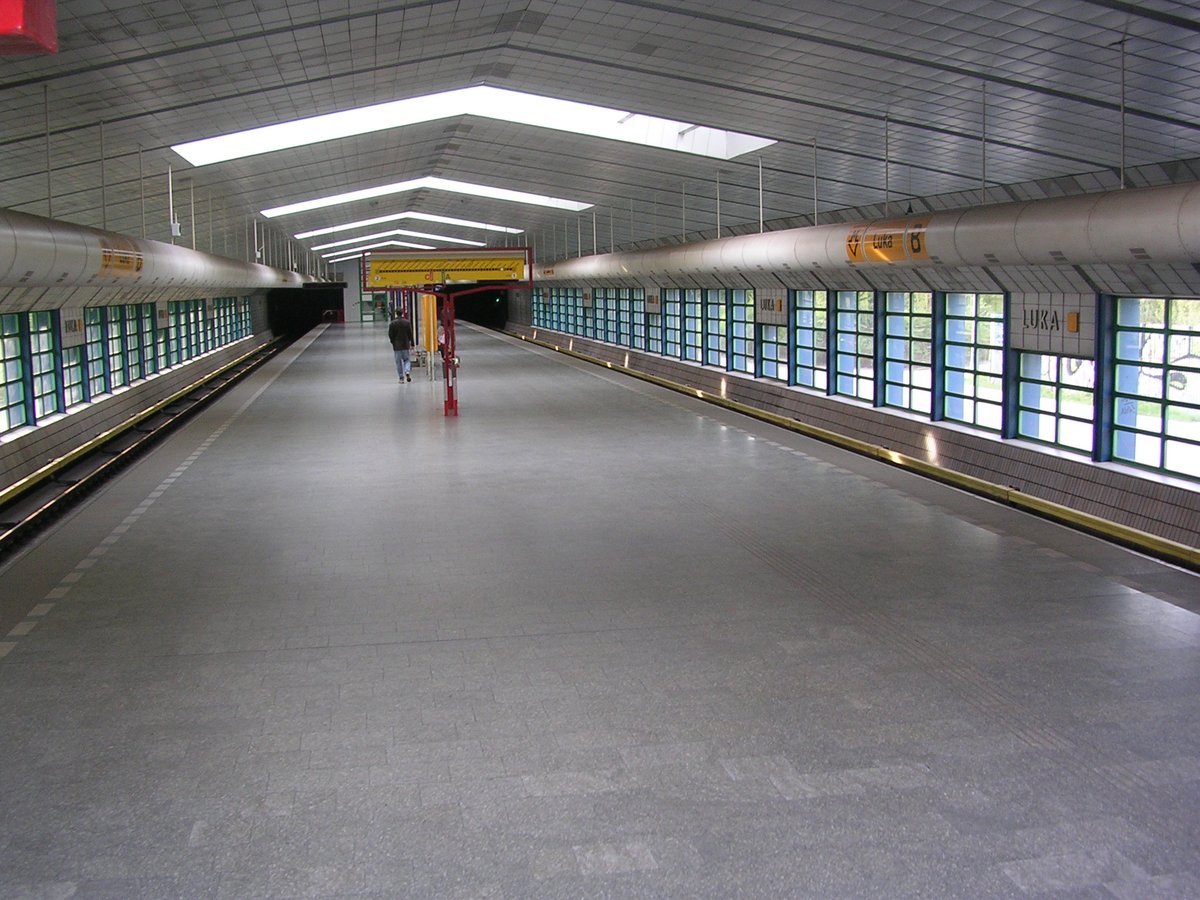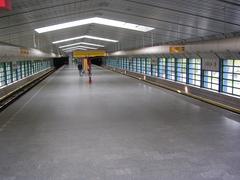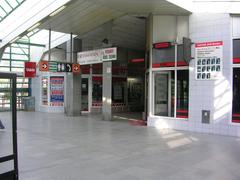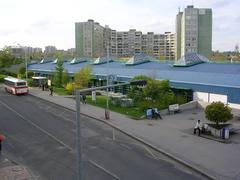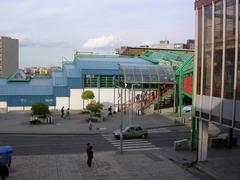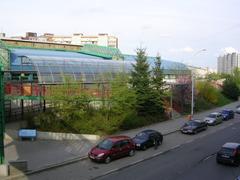Luka Prague Visiting Hours, Tickets, and Historical Sites Guide
Date: 15/06/2025
Introduction to Luka Prague
Luka, situated in the western district of Prague 13, offers a compelling alternative to Prague’s historic center. Unlike the medieval streets and baroque architecture of Old Town, Luka is a testament to Prague’s late 20th-century expansion, characterized by socialist-era panel housing estates (paneláky), broad green spaces, and a vibrant multicultural community. Originally named for the meadows that once dominated its landscape, Luka has evolved from agricultural roots into a thriving residential district, emblematic of Prague’s rapid urban growth in the 1970s and 1980s.
The opening of the Luka Metro Station (Line B) in 1994 integrated the district seamlessly into the city’s transport network, bringing the city center within a 20-minute ride. This accessibility, along with the district’s functionalist architecture and community-focused amenities, makes Luka a fascinating destination for travelers interested in urban development, modern Czech life, and local culture.
Though Luka does not feature Prague’s iconic landmarks like Charles Bridge or Prague Castle, it offers an authentic glimpse into the daily rhythms of city residents. With highlights like Prokopské údolí (Prokop Valley) nature reserve, Central Park, community markets, and cultural events, Luka presents a unique, enriching experience for visitors. This guide covers Luka’s history, practical visitor information—including transportation, accessibility, and visiting hours—along with recommendations for dining, accommodation, and nearby attractions, ensuring a memorable and well-rounded visit.
For maps and transport details, refer to PragueGo. For local events, see Eventland Prague.
Table of Contents
- Introduction to Luka Prague
- Luka’s Historical Evolution and Urban Development
- Cultural and Architectural Significance
- Practical Visitor Tips
- Local Life and Multiculturalism
- Luka in the Context of Modern Prague
- Frequently Asked Questions (FAQ)
- Visual Tour and Resources
- Conclusion
- References and Further Reading
Luka’s Historical Evolution and Urban Development
From Meadows to Modern Suburb
Luka’s transformation began in the 1970s and 1980s, during Prague’s push to provide affordable, modern housing for a growing urban population. The district was named after the grassy meadows (“luka” in Czech) that characterized the area prior to development. Luka was integrated into the broader Jihozápadní Město (Southwest City) project, which aimed to create functional, community-centric neighborhoods through the construction of large, prefabricated apartment blocks known as paneláky (Prague Tourist Information).
Integration with Greater Prague
The construction of the Luka Metro Station (Line B) in 1994 dramatically improved access to the area, transforming it into a commuter-friendly suburb. This transport link spurred further residential and commercial growth, making Luka an attractive option for families and professionals seeking a balance between city life and suburban tranquility (Prague Metro History).
Cultural and Architectural Significance
Socialist-Era Urban Planning
Luka’s paneláky showcase socialist-era ideals of collective living, with an emphasis on communal facilities, green spaces, and accessibility. Over time, many buildings have undergone renovations, adding colorful facades and updated amenities that reflect Luka’s ongoing revitalization.
Multicultural Community
Since the 1990s, Luka has welcomed residents from diverse backgrounds, including Czechs, Slovaks, Ukrainians, Vietnamese, and others. This diversity is evident in local shops, eateries, and community events, enriching the district’s cultural fabric.
Practical Visitor Tips
Getting There and Accessibility
- Metro: Take Prague Metro Line B to Luka station, with frequent trains from city center hubs like Můstek and Florenc. The journey takes about 20–25 minutes (Prague Metro Map).
- Buses: Several bus lines serve the area, connecting Luka with neighboring districts.
- Accessibility: Metro stations and most public areas are equipped with elevators and ramps, suitable for visitors with mobility challenges.
Visiting Hours and Tickets
- Parks and Green Spaces: Open daily from dawn until dusk. No tickets required.
- Community Centers: Hours vary; check local listings or community websites for event schedules.
- Shops and Restaurants: Typically open from 8:00 AM to 8:00 PM; some may close earlier on weekends.
What to See and Do
- Prokopské údolí (Prokop Valley): A nature reserve with trails, limestone cliffs, and scenic views. Open daily; free entry (Cultural Plus).
- Central Park (Centrální park): A large recreational space with paths, playgrounds, sports facilities, and seasonal events. Open dawn to dusk.
- Local Markets and Shops: Explore for Czech goods and fresh produce.
- Community Events: Attend outdoor concerts, seasonal festivals, and workshops (Eventland Prague).
Nearby Attractions
- Stodůlky and Nové Butovice: Additional parks, shops, and cultural venues.
- Historic City Center: 20 minutes by metro to Prague’s key landmarks—Old Town Square, Charles Bridge, and Prague Castle (Cruising Duo Travel).
- Řeporyje: Village-like district with historic sites and local pubs.
Accommodation and Dining
- Lodging: Budget-friendly hotels and guesthouses are available. Short-term rentals offer another option, making Luka ideal for longer stays or families.
- Dining: Enjoy traditional Czech cuisine (such as svíčková, goulash, and fried cheese), pastries, and Pilsner beer at local pubs, bakeries, and cafes. Tipping 10% is customary.
Safety and Etiquette
- Luka is safe and family-friendly. Exercise standard precautions, especially at night and in public transit.
- English is increasingly spoken, but basic Czech greetings (“Dobrý den”) are appreciated.
- Respect local customs, environmental rules in parks, and clean up after pets (Prague Dos and Don’ts).
Local Life and Multiculturalism
Luka’s daily life revolves around its schools, community centers, sports facilities, and green spaces. Families, students, and professionals gather in parks and cafes, creating a lively yet relaxed neighborhood atmosphere. The district’s multiculturalism is reflected in its diverse shops, international eateries, and community events celebrating various cultures.
Luka in the Context of Modern Prague
Luka stands in contrast to Prague’s historic center, with its modernist architecture and focus on functional, sustainable living. This juxtaposition highlights Prague’s layered identity—from its medieval heart to its suburban expansions. Luka’s role as a residential hub with affordable housing and green spaces contributes to the city’s social sustainability and inclusivity (Lonely Planet Prague Neighborhoods).
Frequently Asked Questions (FAQ)
Q: Are there visiting hours or tickets needed for Luka?
A: Luka is a residential area. Parks and Prokop Valley are open daily from dawn to dusk and are free to enter.
Q: How do I get to Luka?
A: Take Metro Line B to Luka station; travel time from the city center is about 20 minutes.
Q: Is Luka accessible for visitors with disabilities?
A: Yes, most public spaces, parks, and the Metro station are accessible.
Q: What amenities are available?
A: Luka offers shops, markets, cafes, bakeries, sports facilities, and regular community events.
Q: Are guided tours available?
A: Guided tours may be arranged through Prague tour operators, though most focus on the historic center. Audio guides and self-guided tours are available via apps.
Visual Tour and Resources
Experience Luka and its surroundings with visual resources:
Conclusion
Luka offers a refreshing perspective on Prague—modern, green, and community-oriented. From its panelák architecture and multicultural community to its lush parks and proximity to both local life and major attractions, Luka stands out as a destination for those seeking authenticity away from the tourist crowds. Whether you’re interested in urban history, outdoor recreation, or experiencing daily Czech culture, Luka is well worth a visit.
Download the Audiala app for audio tours, event updates, and offline maps. For more on Prague’s neighborhoods and travel tips, explore our other guides and follow us on social media.
